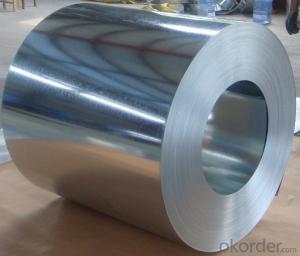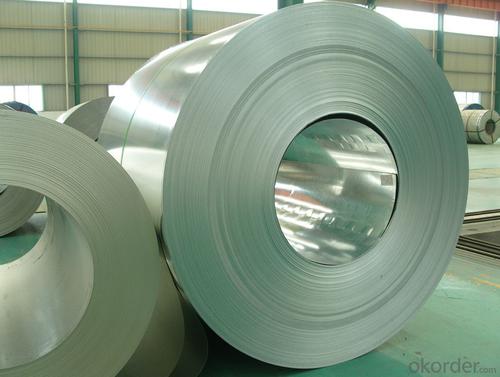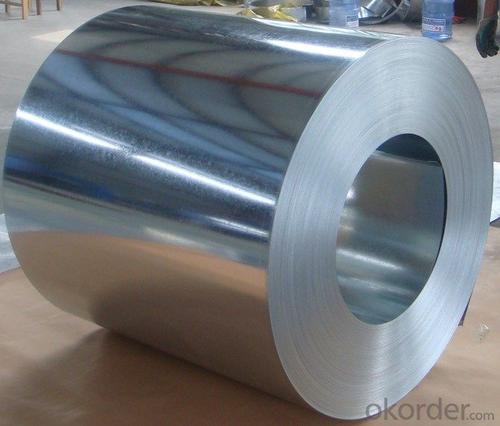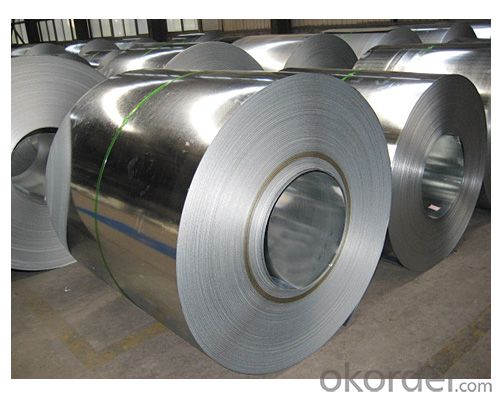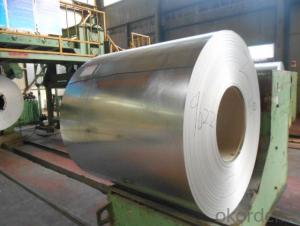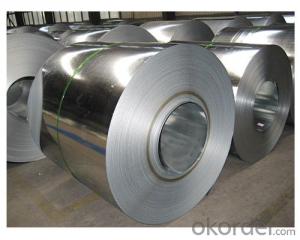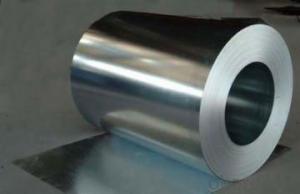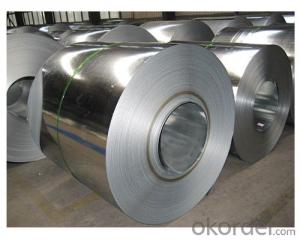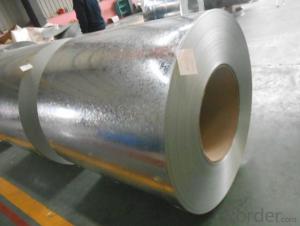Galvanized Steel Sheet in Ciols Prime Quality Best Seller
- Loading Port:
- Shanghai
- Payment Terms:
- TT OR LC
- Min Order Qty:
- 100 m.t.
- Supply Capability:
- 10000 m.t./month
OKorder Service Pledge
OKorder Financial Service
You Might Also Like
1.Structure of Galvanized Steel Coil Description:
Hot-dip galvanized steel coils are available with a pure zinc coating through the hot-dip galvanizing process. It offers the economy, strength and formability of steel combined with the corrosion resistance of zinc.
Zinc coating :40-180g( as required)
Coil id:508mm/610mm
Coil weight: 4-10 MT(as required)
5.FAQ of Galvanized Steel Coil
We have organized several common questions for our clients,may help you sincerely:
1.How to guarantee the quality of the products?
We have established the international advanced quality management system,
• High corrosion resistance
• High strength
3.Galvanized Steel Coil Images
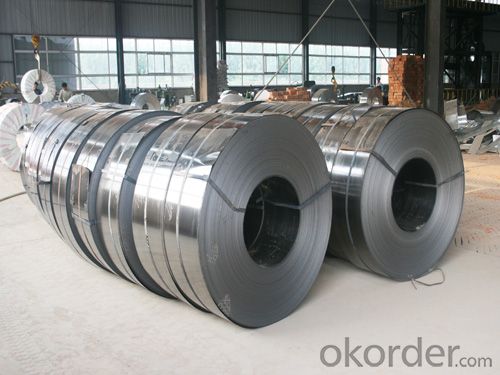
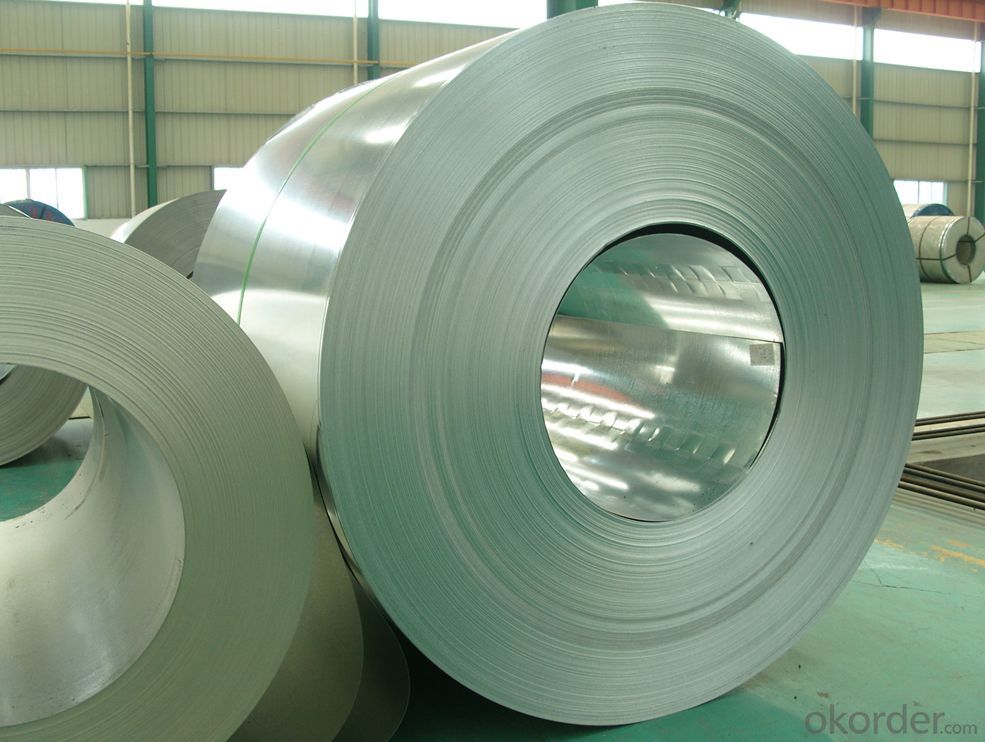
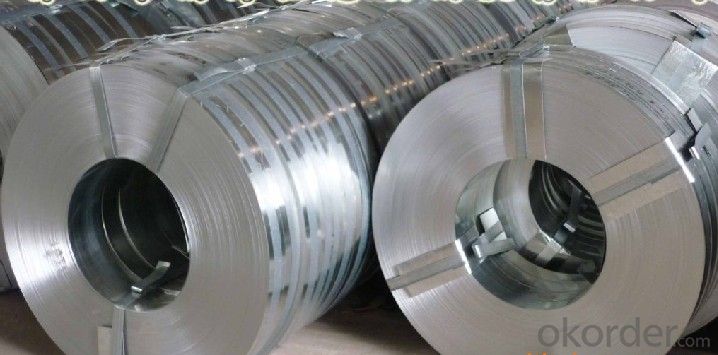
4.Galvanized Steel Coil Specification
Width:914-1250mm(914mm, 1215mm,1250mm,1000mm the most common)
Grade : SGCD,SGCH, Q195,DX51D
Operate Standard: ASTM A653M-04/JIS G3302/DIN EN10143
2.Main Features of the Galvanized Steel Coil:
• Good formability
• Rust- proof ability
• Good visual effect
- Q: what is the difference between METAL and STEEL?
- Metal is the generic name for several pure chemical elements and they alloys that can be made from them. Steel is used to designate alloys that consist mainly of iron, with a limited proportion of carbon in them.
- Q: What are the different methods of uncoiling steel coils?
- Uncoiling steel coils can be done in several ways, depending on the specific requirements and available equipment. Some commonly used methods are: 1. Manual uncoiling: This method involves manually unwinding the coil using a bar or rod inserted through the inner diameter. It is suitable for smaller coils or when other methods are not accessible. 2. Mandrel uncoiling: A mandrel, a cylindrical tool, supports the inner diameter of the coil and enables free rotation. The coil is placed on the mandrel and rotated to unwind the steel. 3. Decoiler machine uncoiling: Designed specifically for uncoiling steel coils, these machines consist of a mandrel or drum to hold the coil. They also include a motorized mechanism to control the speed of unwinding. Decoilers are suitable for larger and heavier coils, making them ideal for industrial applications. 4. Straightener-feeder uncoiling: This method is utilized when the steel coil needs to be straightened and fed into a production line simultaneously. The coil passes through straightening rollers to remove any curvature before being fed into the subsequent processing equipment. 5. Recoiler uncoiling: Recoilers are used when the steel coil needs to be rewound into a new coil. The original coil is uncoiled using one of the previously mentioned methods, and then the steel is rewound onto a new mandrel or drum to create a smaller coil. It is important to consider factors such as the size and weight of the coil, desired level of automation, and specific production requirements when choosing an uncoiling method.
- Q: I have a carbon steel file that I want to bend in a letter C shape. So, what is the malliable temperature? If it's low, could it be done in a camp fire?
- It needs to be RED hot, the hotter the better. Yes you can use a camp fire if you put the file directly in the hottest part of the coals, but it'll take about 5-10 minutes to heat. Charcoal briquettes would probably work better as a heat source. You can use something like a blow dryer to intensify the coals, that might help. You'll also need a bench vice, and the biggest pair of pliers you can find, for leverage. Bending steel's not easy even when it's hot. You could also use a bit of steel pipe that'll fit over the end of the file. Stick the file in the vise when red-hot, slip the pipe over the free end, and use the pipe to bend it. OR, you could use the old-fashioned method of just holding it with pliers in one hand, and hitting it with a 5lb sledge hammer with the other. use something solid as an anvil, like a large steel pipe. you mighe be able to get away with using a small log, but you'll have to work twice as hard. Safety glasses are MANDITORY for this type of thing. Do not attempt without eye protection at all times. Ear plugs are also a very good idea.
- Q: How are steel coils used in the production of metal containers?
- Steel coils are widely used in the production of metal containers due to their versatility and strength. The process of manufacturing metal containers typically involves several steps, and steel coils play a crucial role in each of these stages. Firstly, steel coils are used as the primary raw material in the production of metal containers. The coils are made of high-quality steel that is rolled into a continuous sheet, ensuring consistent thickness and durability. This sheet is then cut into specific widths and lengths according to the size requirements of the containers. Once the steel coils are cut into the desired dimensions, they are formed into the shape of the container using various techniques. One common method is called roll forming, where the steel coil is passed through a series of roll dies that progressively shape it into the desired container shape. This can be done to create containers of various sizes and designs, such as cans, drums, or even large industrial containers. After the initial forming process, the steel coils are further processed to enhance their strength and durability. This can involve heat treatment, where the coils are exposed to high temperatures to increase their hardness and resistance to wear and tear. Other processes like annealing and quenching may also be utilized to improve the steel's properties. Once the containers are formed and processed, they undergo additional fabrication steps such as welding or sealing to ensure their structural integrity. Steel coils are often used in these processes as well, as they provide a strong and reliable material to create sturdy seams and joints. Finally, the metal containers are finished by applying various coatings or treatments to protect them from rust, corrosion, or other environmental factors. Steel coils can be coated with materials such as paint, epoxy, or zinc to enhance their resistance to these elements, ensuring the longevity of the containers. In summary, steel coils are essential components in the production of metal containers. From being the primary raw material to being used in forming, processing, and finishing, steel coils provide the strength, durability, and versatility necessary for the manufacturing of reliable metal containers for various industries.
- Q: How do steel coils resist corrosion?
- A combination of factors contributes to the corrosion resistance of steel coils, including the presence of protective coatings, the utilization of corrosion-resistant alloys, and the implementation of proper handling and storage practices. Galvanization, which involves the application of zinc coatings, is the most common method employed to prevent corrosion in steel coils. This process establishes a barrier between the steel and its surroundings, effectively shielding it from moisture and corrosive elements. The zinc coating acts as a sacrificial layer, taking the brunt of the corrosion instead of the steel itself. Another approach to enhance corrosion resistance entails the use of corrosion-resistant alloys. These alloys are specifically designed to endure harsh conditions and are composed of elements like chromium, nickel, or molybdenum. Upon exposure to the environment, these alloys form a passive oxide layer on the surface of the steel, serving as a protective shield against corrosion. In addition, proper handling and storage practices are crucial in preventing corrosion. It is important to store steel coils in dry and well-ventilated areas to minimize contact with moisture. Care must also be taken to avoid contact with other metals and materials that could result in galvanic corrosion. Regular inspections and maintenance are essential for promptly identifying and addressing any signs of corrosion. In conclusion, the resistance of steel coils to corrosion is achieved through the implementation of protective coatings, the utilization of corrosion-resistant alloys, and the application of proper handling and storage practices. By employing these measures, the longevity and durability of steel coils are ensured in diverse environments.
- Q: What are the different coil handling equipment options available for steel coils?
- There are several different coil handling equipment options available for steel coils, depending on the specific needs and requirements of the industry. 1. Coil Cars: Coil cars are used to transport steel coils from one location to another within a facility. They are typically equipped with hydraulic or mechanical lifting mechanisms to safely load and unload the coils onto other equipment or storage racks. 2. Coil Upenders: Coil upenders are used to rotate steel coils from a horizontal to a vertical position, or vice versa. This equipment is essential for loading and unloading coils onto coil cars or other machinery, as well as for storage purposes. Upenders can be operated manually or hydraulically, depending on the weight and size of the coils. 3. Coil Lifters: Coil lifters are designed to safely handle steel coils during lifting and transportation. They are typically equipped with adjustable arms or hooks that securely grip the coil's inner diameter. Coil lifters can be operated using hydraulic, mechanical, or electromagnetic mechanisms, depending on the weight and size of the coils. 4. Coil Turnstiles: Coil turnstiles are used to efficiently store and retrieve steel coils. They are designed to hold multiple coils in a vertical position, allowing for easy access and retrieval. Turnstiles can be rotated manually or automatically, using hydraulic or mechanical systems. 5. Coil Reels: Coil reels are used to unwind steel coils and feed them into processing machinery, such as stamping presses or roll forming machines. They are equipped with adjustable tension controls to ensure a smooth and consistent feed. Coil reels can be operated manually or automatically, depending on the level of automation required. 6. Coil Cradles: Coil cradles are used to support steel coils during storage or transportation. They are designed to evenly distribute the weight of the coil, preventing deformation or damage. Coil cradles can be stationary or equipped with wheels for easy movement. Overall, the different coil handling equipment options available for steel coils provide a range of solutions for efficient and safe handling, storage, and processing of these heavy and valuable materials. The choice of equipment will depend on factors such as coil size, weight, production volume, and specific industry requirements.
- Q: Two different shaving razors I'm looking to buy have different specs. in terms of the metals used for the blade; one being 1045 surgical stainless steel, the other 440 stainless (not sure if its A B or C, but probably 440A or 440B because it's not specified). So which one is better for the intended use as a shaving razor?
- Type 440 combines such a high grade of cutlery steel, toughness and economy that it is actually known as razor blade steel. Browsing around (a lot) more, it seems that 1045 Surgical Steel is popular in straight razors used by barbers. These razors are honed by stropping with leather and last practically forever. From the above, I would guess that it might be easier to lose the edge on 1045, but also easier to re-sharpen it, that it won't easily knick because probably not so hard as 440. I'm not sure if it would be more expensive, unless it has a superior handle etc. So, I would expect to spend a little more effort over the lifetime of the 1045, maybe pay a little more for it, but have a longer lifetime. hth.
- Q: How are steel coils used in the production of automotive suspension systems?
- Steel coils are used in the production of automotive suspension systems as they provide the necessary support and cushioning to absorb shocks and vibrations while maintaining stability and control. These coils are typically used in coil spring suspensions, where they are compressed and expand to absorb the impact of road irregularities, ensuring a smooth and comfortable ride for the vehicle occupants.
- Q: What are the dimensions of steel coils used in the mining equipment industry?
- The dimensions of steel coils used in the mining equipment industry can vary depending on the specific application and equipment. However, common dimensions for steel coils in this industry range from 0.5 to 3 millimeters in thickness and 600 to 2000 millimeters in width. The length can also vary but is typically around 1000 to 3000 meters.
- Q: ...particularly for jewelry?
- Stainless steel is steel with lots of carbon in it. The amount of carbon gives it a so called grade. Marine grade, surgical grade etc.
Send your message to us
Galvanized Steel Sheet in Ciols Prime Quality Best Seller
- Loading Port:
- Shanghai
- Payment Terms:
- TT OR LC
- Min Order Qty:
- 100 m.t.
- Supply Capability:
- 10000 m.t./month
OKorder Service Pledge
OKorder Financial Service
Similar products
Hot products
Hot Searches
Related keywords

